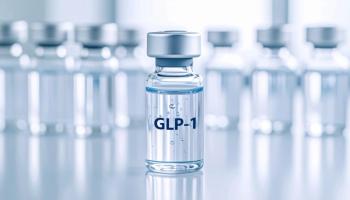
Practice Pearl 2: Inpatient and Outpatient Formulary Treatments for AML
Amanda Brahim, PharmD, BCOP, BCPS, BCACP, shares treatments included on her institution’s formulary for acute myeloid leukemia [AML], and factors that impact the addition of treatments to the formulary.
Katie Culos, PharmD, BCOP: Amanda, I want to transition and talk a little bit about formulary management. You mentioned before that we’ve really had a boom over the last 2 or 3 years with a much stronger amount of options for AML. Currently, at your institution, what AML treatments do you have, either on the inpatient or outpatient formulary?
Amanda Brahim, PharmD, BCOP, BCPS, BCACP: Generally, our inpatient and outpatient formularies are similar, but a little bit different. On the outpatient side, we do have all of the oral targeted agents, as well. On the inpatient side, in terms of new medications for IVs [intravenous drugs], I believe we have everything. We have added gemtuzumab ozogamicin when it came back to market. We did add CPX-351 when it came to market. We also have midostaurin, which we are starting on the inpatient side, for those patients that are getting the traditional 7+3 regimen but have a FLT3 mutation. We’ll start that on day 8, where the patient is still on the inpatient side, and they’re unable to obtain it and bring it into the hospital. So, we have added, from an inpatient perspective, many if not all of the newer agents to the formulary.
Yehuda Deutsch, MD: For some of the drugs that may not be on the formulary, such as IDH inhibitors, on the inpatient side, we do have a lot of support from both the inpatient/outpatient pharmacy and patient-assistance programs and specialty pharmacies to try and help get those medications for our patients, even if they’re admitted in the hospital.
Katie Culos, PharmD, BCOP: That brings up a big question, I think, that most institutions struggle with, with the boom of oral chemotherapy agents that now are on the market. Of the oral targeted agents, is midostaurin the only one that you actually have on your inpatient formulary?
Amanda Brahim, PharmD, BCOP, BCPS, BCACP: We do stock venetoclax as well, because we have recognized that sometimes patients have an urgent need to start this medication. Through a specialty pharmacy, this may take a week, sometimes 2 weeks, to get to the patient’s house. We have recognized that, and we do stock it, although it’s not officially on our inpatient formulary.
Katie Culos, PharmD, BCOP: For the additional agents that you mentioned, Yehuda, essentially, patients will have a home supply of the other targeted agents that aren’t on formulary?
Yehuda Deutsch, MD: I’m sorry. I didn’t hear the question.
Amanda Brahim, PharmD, BCOP, BCPS, BCACP: The IDH inhibitors? Yes, generally. We do have a fully integrated system, so we have our specialty pharmacy within our health care system. Generally, we’ll process the prescriptions through there, and then treat them as patients’ own medication. If it’s truly necessary and urgent, and we’re not able to fill those on the outpatient side, we will obtain them on a case-by-case basis for our patients.
Newsletter
Stay informed on drug updates, treatment guidelines, and pharmacy practice trends—subscribe to Pharmacy Times for weekly clinical insights.

















































































































































































































